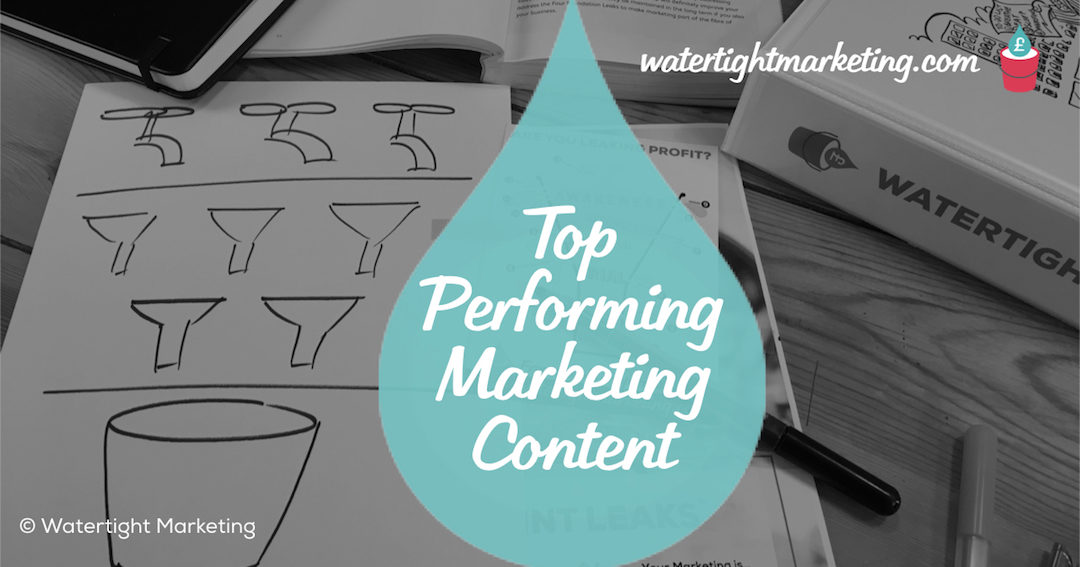Knowing how to plan top performing marketing content is essential to persuading more people to buy from you. Anyone can write content, but not all content leads to sales results. Many clients we encounter have been sold on the idea of content driving sales, but have been disappointed by the results they’ve seen. Many more like the idea but don’t know where to start. I’ve asked Certified Practitioner, Stephen Bateman, to outline how to overcome these frustrations with a proper plan. ~ Bryony Thomas
What happens if you don’t plan top performing content?
Without a plan of top performing content you are simply going to struggle to support your prospects and buyers as they move through your sales cycle, and you will lose them to more persuasive competitors.
Step 1 – Ask: How do you decide what to include in your content plan?
The quick answer is to get a balance of 75% audience-centric to 25% product-focused content. This means that the majority of your content answers the questions they have, and the minority directly highlights the solution you have.
You can simply ask yourself whether your marketing content answers your customers crucial questions:
- Does this business work with clients like me?
- Do they understand my situation?
- Do they know my concerns, issues, and pain points?
- Do they really know what they are doing?
- Have they worked with people like me?
- What do others say about them?
- Have they solved problems for other people like me?
There are also nifty online auditing tools that can give you a steer as to whether you’re on the mark.
Tools to help you plan more customer-centric content marketing
In my experience there are two tools that truly help plan your customer-centric marketing content:
- A buyer persona
- A flow-chart of the buying decision
The first is a buyer persona, which consists of a photograph, name and a description of your archetypal buyer, including their behavioural information.
The second is a simple flowchart showing your buyer’s sales cycle, which, when done properly helps you map out your marketing content in line with your buyer’s journey. Once again, I’ll show examples of the flowchart and subsequent content plan in action.
Together, these two powerful tools help you plan your website and blogging content to support your buyer through the sales cycle, so that rather than drive an audience from consuming content to an immediate sale (unrealistic,) you structure your marketing content in a way that leads buyers naturally from one piece of content to the next.
Step 2 – Ask: What types of content should I plan for?
The average UK marketer uses 13 different types of content, from blog posts to infographics and everything in between.
In working with clients, a starting point is to simply list their preferred content types. Across the many workshops I’ve run with over 150 businesses the average number people get to is 11 content types.
With the help of a content matrix, you can focus your content creation on the right types of content, depending on your audience, their needs and usage patterns, and your business goals. An effective content matrix is the perfect tool to help you plan your content types with discipline, rigour and justification.
Step 3 – Ask: How often should I create new content?
It’s a common misconception for small businesses to feel that they have to create every single piece of marketing content themselves. Unless you’re a content factory like Nestle, you can’t realistically create all your content.
We recommend a 12 month editorial calendar. This helps you plot special interest days, recurring events, seasonal themes and topics. Using Three S Timing from Chapter 8 in Watertight Marketing is an excellent place to start.
This way you can make choices about events and themes you wish to piggyback during the calendar year. You can break your annual calendar down into monthly calendars and make choices about the number and types of content items you will produce in those months, realistically.
This calendar-based approach helps you plan your content output, and anticipate when your audiences will be most receptive to your different themes, and when they are likely to be distracted by events (like Brexit!), so that you can better get their attention.
Step 4 – Ask: How long do we need to create content for?
Google ranks your authority after a long stint of layered, high quality, content. Watertight Marketing extols the virtue of long-term sales results, and of accepting that “slow sales stick”. Content marketing underpins this perfectly.
The truth is that successful content marketing assumes that you pursue a content hub strategy for two years, publishing and layering content on your chosen theme, demonstrating your expertise, and building your audience and your reputation.
When I started with content marketing I didn’t know this, nor that I’d have to produce great content on my chosen topics for two years before I’d see the sales results, but I did and I’m glad I stuck at it.
The short answer is: Don’t take your foot off the pedal too soon. Commitment and consistency is the key.
Step 5 – Ask: Where do you start?
Start with the end in mind. That’s the advice from Stephen Covey. And, as Watertight Marketers, we say turn your marketing upside down. Set traffic and engagement targets for your marketing content from the outset, rather than aiming too high, too fast and failing yourself.
© Stephen Bateman


